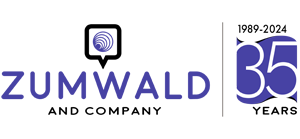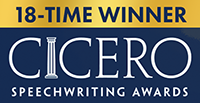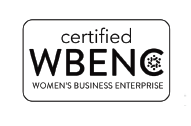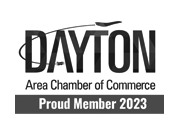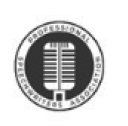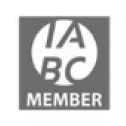Public speaking basics: Why you need to repeat yourself when you speak
CEOs and business leaders: When you have a crucial point to make – and you need to drive it home – don’t ignore the power of repetition as one of the public speaking basics you need to master.
 Last weekend, my husband and I left a church service rather uninspired by the minister’s sermon.
Last weekend, my husband and I left a church service rather uninspired by the minister’s sermon.
“Where was he going with that story?” my irritated husband complained. “He was all over the place! What was the point?”
Indeed.
What was the point?
I tried my best to articulate where I thought the minister was going – just to make my husband feel a little better about the time we’d just spent sitting in church, listening.
But I fell short.
I could not piece together any clear takeaways.
Why was that?
Because the minister failed to repeat himself.
Now that sounds like a bad thing.
After all, if you’ve ever had a teenager to raise (and we’ve raised three of them), you might be inclined not to repeat yourself when you deliver a speech or make a presentation.
That’s likely because that teenager you raised never ceased to remind you the moment you started to repeat yourself.
(I can’t count the number of times over the years when my youngest daughter stopped me – while I was likely on a soapbox – with a tart and saucy plea: “Mom. STOP. Please! You just said that.”)
But that is not the kind of repetition I’m talking about here.
When it comes to public speaking basics, there’s a fundamental need for repetition.
In fact, there is power in repetition.
If you believe in your message and care about your audience, you need to start repeating yourself.
You can’t just say it once.
You have to say it twice.
Three times.
And sometimes even more than that.
Let me explain what I mean.
REPETITION BENEFITS YOU, THE SPEAKER
1 – Repeating a key statement or phrase reminds you to DECIDE upfront why you are speaking in the first place
 If you’re trying to master public speaking basics, you first need to decide why you are speaking – to this audience, at this time.
If you’re trying to master public speaking basics, you first need to decide why you are speaking – to this audience, at this time.
That may sound too basic.
But believe me, it’s not.
Whether you are a leader talking to an internal audience of employees – or to an external audience of customers, suppliers or peers – you need to make this decision upfront.
That’s because this decision will drive the one main message you must have to frame your entire talk.
Your one main message is the starting point for crafting a key statement or phrase that you will repeat – in one form or another – at the right moments throughout your presentation.
The minister we heard last weekend did not decide on one main message.
And he did not craft a repeatable key statement or phrase.
And that is why he was – as my husband said – “all over the place.”
2 – Repeating a key statement or phrase motivates you to SIMPLIFY your language
Whenever I’m drafting a client’s speech, one of my public speaking basics is to carefully craft the one main message and put it in a box – front and center – on page 1 of the outline.
 That one main message – usually two or three sentences – nails the point and provides context for the talk to keep me (and ultimately the client) on track.
That one main message – usually two or three sentences – nails the point and provides context for the talk to keep me (and ultimately the client) on track.
With one main message as a starting point, I can then simplify – boil the essence down even further – and select the precise words that bear repeating.
Something short and catchy – easy to remember.
Here are some examples of key statements and phrases from several award-winning client speeches – simple, repeatable language – based on the one main message anchoring each speech:
- “Never stop jumping”
- “Sharing, trusting and helping”
- “Keep your eyes on the prize”
- “Work better together”
- “Think different”
- “Master the fundamentals”
3 – Repeating a key statement or phrase compels you to DISCARD extraneous points that distract or detract
Once you land on the key statement or phrase to be repeated, it serves as a beacon – a way forward to help you decide what points to leave in – and what points to take out.
 Consider the “never stop jumping” phrase above – a metaphor for being bold and taking risks – based on a ski-jumping story told in that speech.
Consider the “never stop jumping” phrase above – a metaphor for being bold and taking risks – based on a ski-jumping story told in that speech.
“Never stop jumping” became my guiding light. It helped me quickly sort through all the potential stories and points I could have made so I could easily choose the essential points that had to be made.
As a result, the speech stayed laser-focused: If employees wanted to move the company forward, they had to be bold. They had to take risks. They had to agree to “never stop jumping.”
A side note: You have some flexibility here.
The speech mentioned above had a few variations on the “never stop jumping” theme. All of them included the word “jump”:
- “One jump at a time”
- “New jumps”
- “Go ahead and jump”
- “Take a risk and make a jump”
REPETITION BENEFITS YOUR AUDIENCE
1 – Repeating a key statement or phrase tells the audience “this must be IMPORTANT!”
Think about it: The more you hear a key statement or phrase repeated in a speech, the more your brain tells you that this statement or phrase must be something important.
And so you start to pay more attention.
Repetition helps your audience quickly sort and rank what’s most relevant while they are listening. It has the power to elevate an idea above everything else the audience is hearing. That’s why repetition is one of the public speaking basics you need to understand and apply.
Take a look at these five excerpts from a 30-minute speech.
They purposely repeat a simple phrase – “master the fundamentals” – to convince employees in the audience that they must take this step to move the organization forward.
 I believe this: That your ability to master the fundamentals will free you to innovate – and contribute to our collective success.
I believe this: That your ability to master the fundamentals will free you to innovate – and contribute to our collective success.
# # #
And – as the Wrights discovered! – mastering the fundamentals of anything unique and different is hard work.
# # #
Your ability to master these fundamentals will sustain the future of this organization.
# # #
… that’s your job: to create the future by continuing to innovate. But you can’t do that unless you master the fundamentals of our philosophy, our business model and our five key principles.
# # #
Mastering the fundamentals makes all the difference.
If the Wright Brothers had not mastered the fundamentals of control, the airplane would have never been a safe or practical means of transportation – across the country … around the world … and into space.
And if the first and second generations … had not mastered the fundamentals of our unique and different philosophy, business model and key principles – we would have never been able to create and sustain an organization where opportunity exists for everyone.
2 – Repeating a key statement or phrase tells the audience “this must be TRUE!”
Consider this fact, which often plays out in political discourse:
The more you hear a key statement or phrase repeated in a presentation, the more you begin to believe that surely this statement or phrase is true.
And so you are persuaded.
You begin to believe.
Repetition has the power to convince people that what you are saying is true.
It can help you win people over – and change the way they think or behave.
Take a look at these excerpts from another client’s speech.
The speaker five times repeated a simple key phrase – “think different” – to convince the audience that they can reduce high employee turnover in call centers by changing the way they hire.
 I bet every person in this room recognizes these words from Apple’s 1997 advertising campaign, “Think different.”
I bet every person in this room recognizes these words from Apple’s 1997 advertising campaign, “Think different.”
A TV commercial helped Steve Jobs launch one of the greatest turnarounds in business history. This commercial began by saluting a long line of revolutionaries – the “crazy ones” like Albert Einstein. Dr. Martin Luther King Jr. And Amelia Earhart. People who changed the world.
# # #
Think different. I believe that’s exactly what our industry needs to do – think different – about a universal challenge we all face, whether we’re a call center, contact center, order processing center or service center …
What is this so-called universal challenge we face?
You know it because you’ve complained about it. You’ve suffered through it. And you’re still frustrated by it.
It’s called high turnover. And it’s everywhere!
# # #
“ … we see it over and over again, every single day: The more screening you do, the more likely you are to hire right – and reduce turnover. And reducing turnover improves the customer experience.
 So think different!
So think different!
More training and more technology won’t solve your turnover problem.
But the right hiring will.
# # #
I believe if we have any hope of moving our service centers forward – from good to great – we must change the way we hire our people.
Some might think it’s crazy. But others will see genius.
What will you see?
But more importantly – what will you do?
Will you think different?
Will you be someone crazy enough to change your world?
3 – Repeating a key statement or phrase tells the audience “this must be SOMETHING TO REMEMBER!”
 Whenever I’m coaching leaders on the public speaking basics required to deliver a great speech, I remind them that their audience only gets one shot to hear what they have to say.
Whenever I’m coaching leaders on the public speaking basics required to deliver a great speech, I remind them that their audience only gets one shot to hear what they have to say.
If you have an important point to make – but you don’t make it well – there’s no going back.
Instead, there’s a good chance your audience will get hopelessly and endlessly lost and confused because they cannot rewind or reread what you just said.
That is exactly what happened when my husband and I heard that minister last weekend.
Because we were hopelessly and endlessly lost, we could not remember what he said.
His message did not stick because it was not repeated.
It was not reinforced.
It was not ingrained in our memory.
So what he said was impossible to recall.
That is why repetition is such a useful tool – not only to achieve understanding but also the ability to remember.
Had we been able to recall what the minister said, we would have been able to think more about it – and perhaps more importantly – act on it later.
REPEAT AFTER ME
 Many famous speeches in history make good use of repetition.
Many famous speeches in history make good use of repetition.
Think of:
- Sojourner Truth’s “Ain’t I a Woman?” speech in 1851
- President John F. Kennedy’s inaugural address on “freedom” and “peace” in 1961
- Martin Luther King’s “I Have a Dream” speech in 1963
- President Barack Obama’s “Yes We Can” speech in 2008
- Oprah Winfrey’s “Their Time is Up” speech in 2018
If you want to master public speaking basics, imitating what great speakers do makes sense.
So in spite of what your teenager may be telling you, go ahead and repeat yourself.
Please.
Say it again.
Remind your audience what’s important.
What’s true.
And what they need to remember.
After all, what you have to say bears repeating.
Do you need to create a speech or presentation that resonates?
Work with Teresa Zumwald, an award-winning speechwriter and speech coach.
Contact us today!
